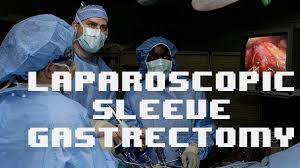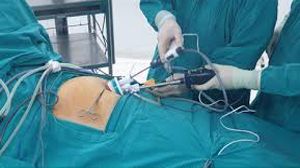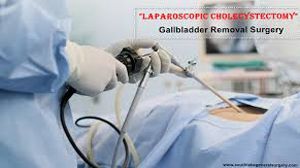Robotic Surgery Advancement: Emergence of Skin to Skin Robotic Cholecystectomy Using Mantra Robot
Add to
Share
759 views
Report
1 year ago
Description
Title: Innovations in Surgical Procedures: The Emergence of Skin to Skin Robotic Cholecystectomy Using Mantra Robot The field of surgical technology has witnessed revolutionary advancements in recent years, with the development of robotic-assisted procedures marking a significant milestone. Among these advancements, the Skin to Skin Robotic Cholecystectomy using the Mantra Robot stands out as a groundbreaking innovation, particularly in the realm of minimally invasive surgeries. Understanding Cholecystectomy Cholecystectomy, the surgical removal of the gallbladder, is a common procedure typically performed for gallstones and other gallbladder diseases. Traditional methods include open surgery and laparoscopic cholecystectomy. However, with the advent of robotic technology, surgeons can now perform these procedures with greater precision, flexibility, and control. The Mantra Robot: A New Era in Robotic Surgery The Mantra Robot represents a new generation of surgical robots designed to enhance the capabilities of surgeons during complex procedures. This robot is specifically engineered to facilitate skin-to-skin surgery, which emphasizes minimal invasiveness from the initial incision to closure. Key Features of the Mantra Robot Enhanced Precision and Control: The robot provides surgeons with superior dexterity and precision, reducing the risks associated with human error. 3D Visualization: High-definition 3D visualization offers a detailed view of the surgical site, enabling more accurate and efficient surgery. Ergonomic Design: The robot's design reduces surgeon fatigue, allowing for longer and more complex procedures with consistent performance. Reduced Recovery Time: Patients benefit from smaller incisions, less pain, and quicker recovery times compared to traditional methods. Skin to Skin Robotic Cholecystectomy Procedure The procedure involves making small incisions through which the robotic arms and a camera are inserted. The surgeon controls the robot from a console, performing the surgery with unparalleled precision. The minimally invasive nature of the procedure results in less postoperative pain, reduced scarring, and faster recovery. Advantages Over Traditional Methods Reduced Trauma: Smaller incisions mean less trauma to the body and reduced risk of infection. Shorter Hospital Stay: Patients often experience a shorter hospital stay and quicker return to normal activities. Lower Pain and Discomfort: Minimally invasive procedures typically result in less pain and discomfort during recovery. Challenges and Considerations Despite its benefits, the implementation of robotic technology like the Mantra Robot in surgical procedures does come with challenges. The cost of robotic systems and the need for specialized training for surgeons are significant factors that can impact its accessibility and widespread adoption. Conclusion The Skin to Skin Robotic Cholecystectomy using the Mantra Robot exemplifies the remarkable progress in surgical technology, offering a safer, more efficient, and less invasive option for gallbladder removal. As technology continues to evolve, it is anticipated that such innovations will become more accessible, further transforming the landscape of surgical procedures worldwide. Applications in Surgery: The Mantra Surgical Robot is utilized in numerous surgical fields, including but not limited to: General surgery Urology Gynecology Thoracic surgery Cardiac surgery Benefits to Patients and Surgeons: For Patients: Reduced postoperative pain, shorter hospital stays, faster recovery, smaller scars, and lower risk of infection. For Surgeons: Greater surgical precision, reduced physical strain, the ability to perform complex surgeries with more control, and enhanced visualization for improved decision-making during operations. Challenges and Future Prospects: While the Mantra Surgical Robot brings numerous advantages, there are challenges to consider. The cost of acquiring and maintaining such advanced robotic systems can be significant, potentially impacting healthcare budgets. Additionally, there is a need for specialized training for surgeons to effectively use these systems. Despite these challenges, the future of robotic-assisted surgery looks promising. Continuous advancements in technology are expected to address current limitations, making these systems more accessible and versatile. Contact us World Laparoscopy Hospital Cyber City, Gurugram NCR Delhi, India World Laparoscopy Training Institute Bld.No: 27, DHCC, Dubai, UAE World Laparoscopy Training Institute 5401 S Kirkman Rd Suite 340 Orlando, FL 32819, USA
Similar Videos






